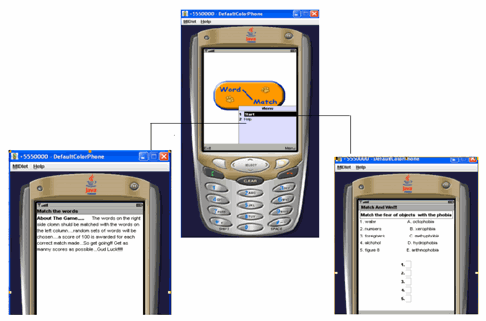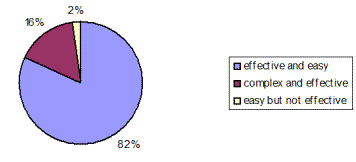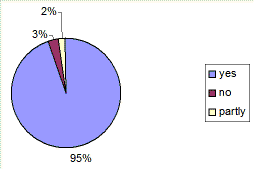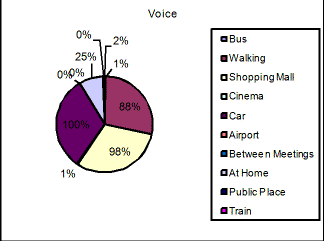| September 2007 Index | Home Page |
Editor’s Note: Mobile devices play an increasing role in educational communications. Laptops and Personal Digital Assistants (PDAs) are now supplemented by smart phones with internet connectivity. Google projects that Internet searches via cell phones will be a major market in the near future and many companies are developing services to support messaging, video, and other services. This article explores the use of smart cell phones to learn English as a Second Language (ESL) and English as a Foreign Language (EFL).
Mobile Language Class: Language Learning through Mobile Gaming
Shalini Upadhyay, Nitin Upadhyay
India
Abstract
This paper studies how mobile phone can create a better environment for language learning (with emphasis on learning English as a second and foreign language). It focuses specifically on the language skill sets by incorporating lesson on English grammar and vocabulary building. It provides users easy accessibility to deal with the problems of incorrect grammar/usage and wrong choice of words. A case survey is conducted which identifies how mobile phone can be effectively used in imparting language lessons to the students.
Keywords: m-learning, language learning, mobile computing.
Introduction
Mobile devices have become pervasive objects as soon as people started using mobile phones, smart phones and PDAs on move “anywhere, anytime”. A paradigm shift has been identified from e-learning to m-learning (Upadhyay, 2006). In the recent years, with the shift from an instructional paradigm to a learner-oriented approach towards language learning/teaching and understanding the way person learn, is of crucial importance and is the key to educational improvement. Students seek different modes (text, voice, multimedia etc.,) to understand and comprehend. It is widely believed (Reid, 1987; Celcc-Murcia, 2001) that the different ways of how a learner takes in and processes information are collectively referred to as learning styles or learning preferences. It is believed that emerging wireless and mobile networks will provide new applications in mobile learning (Gayeski, 2002). To improve the effectiveness of students learning, teachers should provide content compatible to various modes with the ways through which learners like to learn the language. Interesting work has been done in suitable educational methodologies and related mobile technology, tools, languages and interfaces for special categories of learners (MobiLearn, 2001), architectures and specifications for m-learning platforms (Simon et, al., 2003; Kurbel and Hilker, 2002), services for learning (Atif , 2003; Simon et, al., 2003) and adaptation of e-learning to m- learning (Andronico, 2003; Trifonova and Ronchetti, 2004).
The present study is intended to investigate the language learning capabilities of engineering students belonging to the central part of India. Specifically, the study seeks answers to these questions regarding language learning via cell phones:
§ What are the learning mode preferences of Indian learners?
§ Are significant changes identified in development of language skills?
§ How and in what manner can language content be delivered to Indian learners?
§ Do cell phones make effective use of time in language learning?
Pedagogical Issues
Currently whatever curriculum for language learning is available supports mostly static and non-interactive content. However, mobile phone based curriculum demands effective and comfortable development of platform for teaching and learning along with sound instructional practices. The research on readability and comprehension with small screens (Duchnicky & Kolers, 1983; Dillon et, al. 1990) shows that even for very small displays of only a few lines of text, users can read and understand information well. Following issues have been identified for designing content of language learning through mobile phone.
§ Short and crispy sentences for understanding of grammar.
§ Sentences showing common errors of English by India students
§ Organization of the lesson content in a way that equally emphasizes both receptive and productive skills.
§ Voice recordings for clear pronunciation and articulation of words.
§ Recorded short stories for developing reading skills.
§ Different levels of exercises for evaluating the language proficiency of the users.
§ Automated evaluation of pronunciation and speaking
§ Interactivity with the content via student’s responses.
§ Effective learning using multimode applications.
As devices become smaller, modes of interaction other than keyboard and stylus are a necessity. Nonetheless, there is also evidence that to a certain point, the size of the display will impact on the users’ performance (Swierenga, 1990). In particular, small handheld devices like cell phones and PDAs serve many functions and contain sufficient processing power to handle a variety of tasks.

Figure 1. Multi modes: touch screen, text and voice interaction
Developing Mobile Language Class
To evaluate the learning language capability of students using mobile phones initially a pilot project, with two games, is developed – Match Game, and Word Game. For developing mobile language learning games J2ME and NetBeans software environment are used. Figure 2 shows the general architecture to deal with language learning.

Figure 2. Architecture for Mobile Language Class
The user interacts with the mobile phone to play interactive games for language learning. The server (web server) maintains the database for contents and exercises. Through web gateway user connects to web server for accessing contents and exercises.
Mobile Application
Word game
In this game the user will be shown synonyms and antonyms questions for vocabulary building one at a time and he has to type the answer in the provided text box. If he answers correctly, next question will be displayed. There are few sets of the questions stored in the database each set contains five questions. These sets are organized on level-basis. The complexity of the levels increases as the user keeps on answering. If the user is not able to answer any question, the game is over and he will be shown the solution. The screen shot for the game is shown in figure 3.

Figure 3. Screen shot of WORD game.
Match Game
The game consists of exercises on English Grammar. The first section includes a series of sentences, which do not follow correct sentence construction. With each word in a sentence a unique integer is attached. The user is required to arrange these integer values in a proper manner to match it with the correct sentence pattern. The second section includes sentences, which are grammatically incorrect. The user’s job is to select the integer with incorrect word/phrase. The pop-up window appears as soon as the user clicks the mobile button corresponding to integer. This pop-up window contains various options out of which the user has to choose one for correctness. The screen shot for the game is shown in figure 4.
At the end of the entire exercise, a feedback mechanism is generated.

Figure 4. Screen shot of Match game.
Case Study: Result and Discussion
Results of some of the items in the questionnaire are presented in this section. This result support the assumption that technology based teaching helps most the low skilled pupils (Sinko & Lehtinen 1999). Some of the responses received rendered significant results, while some others did not. A sample of 200 students from the central part of India participated in the case study. Each player was allowed to play both the games. The questions asked and the answers obtained are briefed below.
1) Students were asked to express view on selection of learning modes, table 1, in various contexts.
Table 1
Selection of Learning Modes in Different Contexts
Context | Modality | ||
Text | Voice | Touch | |
Train | 80% | 2% | 18% |
Bus | 73% | 1% | 26% |
Walking | 2% | 88% | 10% |
Shopping Mall | - | 98% | 2% |
Cinema | 10% | 1% | 89% |
Car | - | 100% | - |
Airport | 22% | - | 78% |
Between Meetings | - | - | - |
At Home | 55% | 25% | 20% |
Public Place | 13% | - | 87% |
The result of this question clearly indicates, Figure 5, 6, and 7, that the students selected different learning modes in different contexts. For example maximum number (%) favoured text while traveling in train or bus and at home. Voice interaction received maximum support by the users while walking and in the shopping mall as listening and speaking activity can go together with walking and shopping in the malls. Touch interaction got maximum favour in cinema halls, airport and public places where speaking is practically prohibited.

Figure 5. Text in different contexts

Figure 6. Touch in different contexts.
Figure 7. Voice in different contexts.
2) What do you prefer among the following – m-learning, e-learning and distance learning (d-learning)?
m-learning:-88%.
The students said since m-learning involves portable devices like cell phones, PDA, etc.
One can get any information anytime and anywhere.
e-learning :-10%.
The students said since the screens of the portable devices mentioned above is small it may not be as user friendly as the desktop PC’s. There could also be more network connectivity problem in m-learning than in e-learning.
d-learning:-2%.
The materials may not reach in time. There could be communication gap between the source and the receiver. It is also more expensive than the other two forms of learning.
The overall percentage of response is shown in figure 8.

Figure 8. Learning preferences.
3) Are the exercises having different levels effective for understanding rules of Grammar?
- yes
- no
- can’t say
Figure 9 shows the overall percentage of response.

Figure 9. Learning rules of grammar.
Yes: 63%
These students found the exercises on understanding rules of grammar to be effective because in mobile screen voluminous discussion on the rules of grammar could not be discussed and only most accurate and precise information regarding grammar could be given in short sentences along with relevant and interesting exercises. In this process learning becomes effective.
No: 13%
These students wanted to have elaborate discussion on the basic rules of grammar, which seems to be a cumbersome process in mobile application.
Can’t say: 24%
This lot of students got confused. They were used to traditional modes of instruction and were apprehensive about the use of mobile devices as substitutes to traditional modes. However, they could also foresee that sooner or later technology would have its say in every sphere of life.
4) To what extent word game is useful in improving vocabulary.
a. basic level
b. moderate level
c. advanced level
The overall percentage of response is shown in figure 10.

Figure 10. Word games to improve vocabulary.
basic level: 13%
These students voted for the basic level as they already had sound language background and possessed good word power. These students were incidentally aspirants preparing for various MBA programmes across the country.
moderate level: 67%
These students selected the moderate level and expressed their desire for more levels before reaching the advanced level.
Advanced level: 20%
Remaining students found the vocabulary content of advanced level as they lacked good language skills.
a. effective and easy
b. complex and effective
c. easy but not effective
Figure 11 shows the overall percentage of response.

Figure 11. Ease of Learning
Effective and easy: 82%
The students said language learning is effective and easy: Students could learn language anytime anywhere. This gives the freedom of language learning and helps them to overcome the behavioural constraints such as shyness, nervousness and lack of confidence, which arise due to poor language skills. Since mobile phones is the most attractive and popular gadget among students they found language learning easy and effective through simple gaming techniques.
Complex and effective: 18%
This group of students found language learning to be complex due to constraints of small screen and resolution. They found viewing inconvenient and straining. However, they still felt that language teaching and learning through mobile e-learning environment was effective due to the fact that mobile devices do not come under the constraints of time and distance. Hence they could learn language as and when they felt like doing so.
6) Did you find Mobile Language class effective?
a. yes
b. no
c. partly
The overall percentage of response is shown in figure 12.

Figure 12. Effectiveness of mobile language class
yes: 95%
A remarkable result is the outcome of this question in which maximum students favoured for the effectiveness of the language content.
no: 3% and partly: 2%
These students upheld the view that the proper mechanism of feedback and interaction could not be generated through a mobile device. Moreover it also lacked that personal and informal; touch which is very much prevalent in face-to-face communication.
Conclusion
It may be inferred from the above discussion that Indian students found mobile technique for language learning effective and easy as the mobile device is quite a popular gadget; language learning through games generate interest and makes the process simple; mobile learning techniques involves the principle of ‘anytime anywhere’, which makes it available to the user as and when required. It is also observed that since students lacking language skills suffer from behavioural complexes such as shyness, hesitation and nervousness, they could easily overcome these complexes, as mobile language class did not involve participation of a teacher and other students. How the language contexts can be delivered to Indian students should be based on the pedagogical issues identified in the paper. It should be noted that the mobile phone is one device that effectively utilizes time and the user is not bound by time constraints. A mobile language class supports a variety of learning styles in a timely and interactive fashion. It is a paradigm shift from e-learning to m-learning. The influence of technology on current academics is such that in near future the whole context of learning will come under single umbrella of m-learning.
The research is undergoing to implement the various modalities such as touch and voice interactions to make the mobile language class more effective. The results of this research will be reported in subsequent publications.
References
Andronico, A., Carbonaro, A., Colazzo, L., Molinari, A., Ronchetti, M., and Trifonova, (2003)
A. Designing Models and Services for Learning Management Systems in Mobile Settings. Mobile HCI 2003 Intl.Workshop, LNCS 2954.
Atif, Y., Benlamri, R., and Berri, J. (2003) Learning Obejects Based Framework for Self Adaptive Learning, Education and Information Technologies 8:4, Kluwer Academics.
Celce-Marcia, M. (2001). Teaching English as a second or foreign language (3rd ed.). Dewey Publishing Services: NY.
Dillon, A, Richardson, J & McKnight, C (1990) "The Effect of Display Size and Text Splitting on Reading Lengthy Text from the Screen," Behaviour and Information Technology, 9(3):215-227.
Duchnicky, R. L. & Kolers, P. A. (1983) "Readability of text scrolled on visual display terminals as a function of window size," Human Factors, 25:683-692.
Gayeski, D., (2002) Learning Unplugged:Using Mobile Technologies for Organizational Training and Performance Improvement, AMACOM, New York.
Kurbel, K., and Hilker, J. (2002) Requirements for a mobile e-Learning Platform. Intl.Conf.on Communications, Internet and Information Technology, US Virgin Islands.
MobiLearn (2001), The MobiLearn project, IST 2001-3787. http://www.mobilearn.org.
Reid, J. M. (1987). The learning style preferences of ESL students. TESOL Quarterly, 21,
87-111.
Simon, B., Miklos, Z., Nejdl, W., Sintek, M., Salvanchua, J. (2003) Smart Spaces for Learning: A Mediation Infrastructure for Learning Services. WWW 2003 Intl.Conference.
Sinko, M. & Lehtinen, E. (1999) The Challenges of ICT. Jyvaskyla, Finland: Atena kustannus.
Swierenga, S. J. (1990) "Menuing and scrolling as alternative information access techniques for computer systems: interfacing with the user," Proc. Human Factors Society 34th Annual Meeting, 1:356-359.
Trifonova, A., Ronchetti (2004) M.A General Architecture to Support Mobility in Learning. 4th IEEE ICALT 2004- "Crafting Learning within Context”, IEEE Comp Soc.
Upadhyay, N (2006). M-Learning - A New Paradigm in Education. International Journal of Instructional Technology and Distance Learning. 3(2), pp. 31-34.
About the Authors
Dr. Shalini Upadhyay is a Lecturer in the Languages Group at BITS-PILANI GOA CAMPUS. She holds a Ph.D. in English Literature. She is a reviewer of various international journals of repute which includes Interdisciplinary Journal of Knowledge and Learning Objects, USA, Interdisciplinary Journal of Doctoral Studies, USA, InfoLit Book, Informing Science Institute, UK. She is an active member of Association for Business Communication, USA. Her areas of interest includes: Business Communication, Soft Skills, Pedagogical Issues in Instructional Technology, Non-verbal communication, Technical Communication and Personality Development
Email: shaliniu16@gmail.com
Nitin Upadhyay is an acknowledged teacher and prolific writer. He is currently working as Faculty in the Department of Computer Science and Information Systems, BITS, PILANI-GOA Campus. He has created a definite niche for himself in the field if Computer Science by contributing eight books. His research and creative zeal has enabled him to contribute research papers for journals and conferences. He is involved with a number of internationally acclaimed journals and professional bodies in the capacity of editor/reviewer/member.
Email: upadhyay.nitin@gmail.com
Nitin Upadhyay
Computer Science & Information Systems Group
Birla Institute of Technology and Science (BITS)
Pilani-Goa Campus
NH-17B Bypass Road
ZuariNagar, Goa-403726
INDIA
